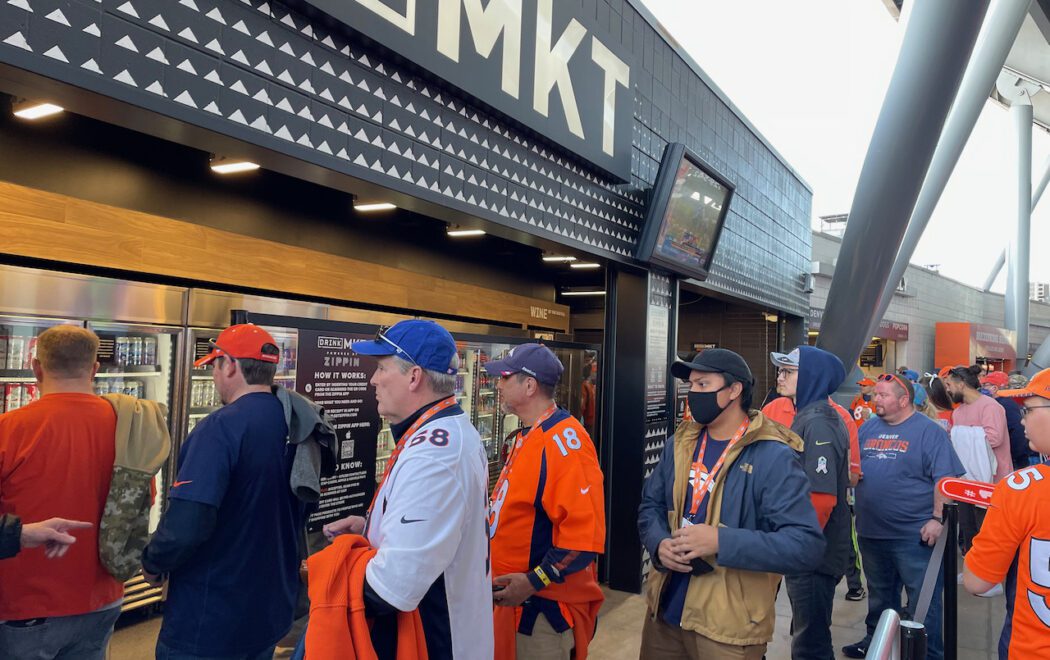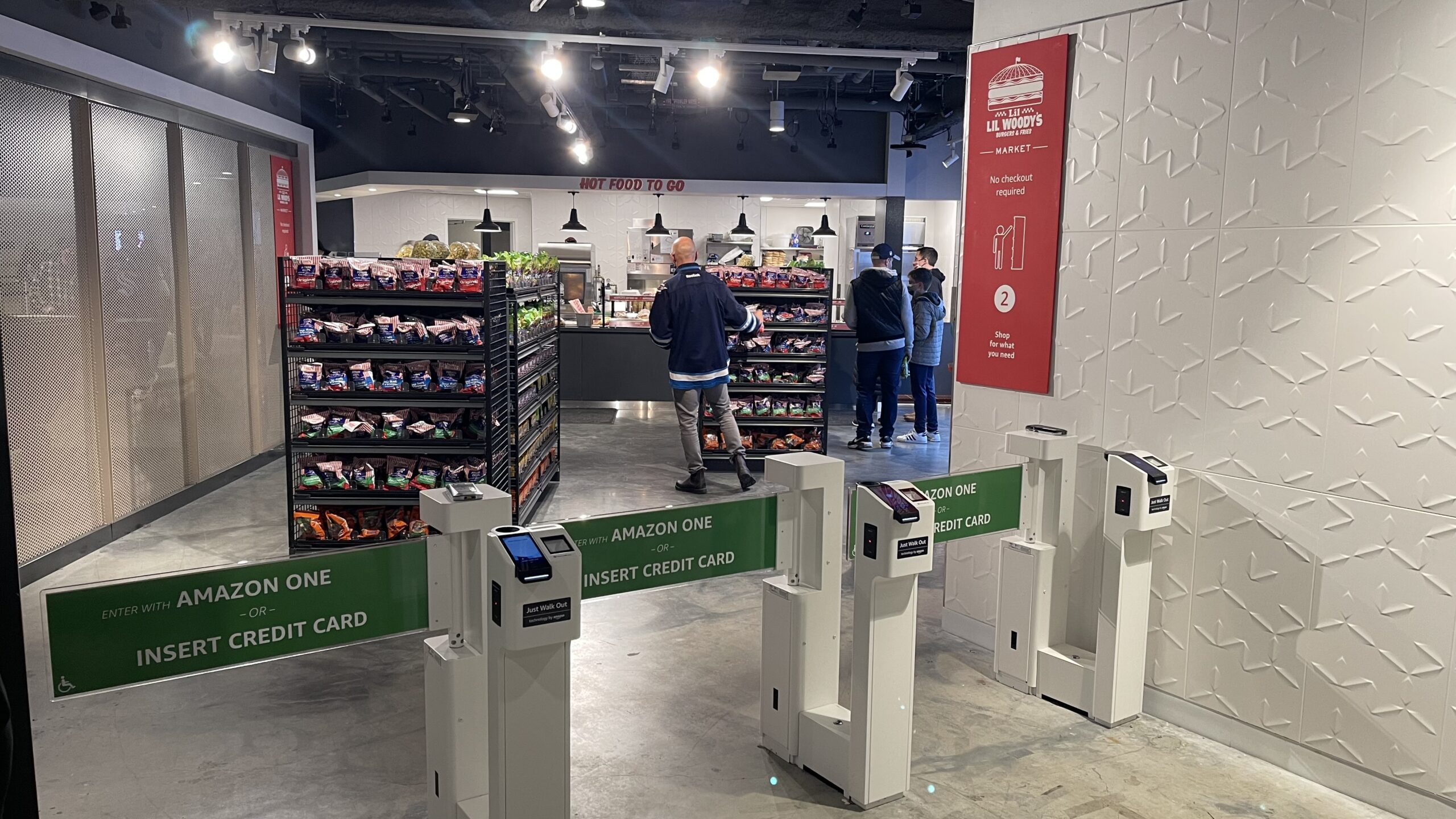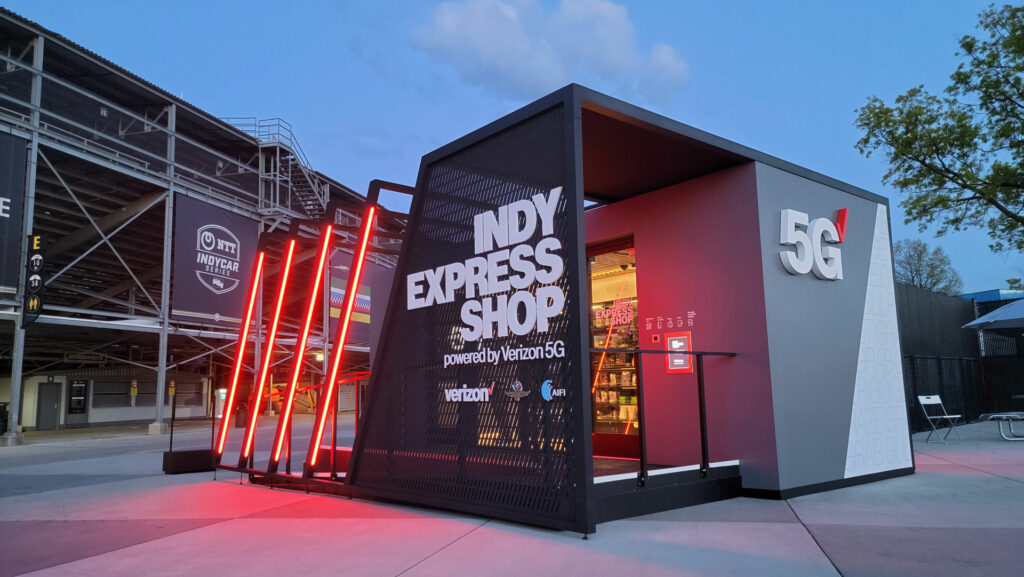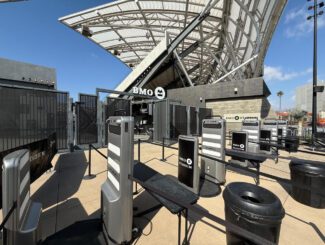
Coming soon, to a venue near you: Checkout-free concession stands, where you walk in, take what you want and walk out, leaving the billing to the network.
If your stadium doesn’t have these types of stands yet, just wait. If investors have anything to say about it, companies providing the technology behind the most innovative thing to possibly ever happen to the crusty old world of stadium concession stands will explode in orders for their services soon. That’s the kind of momentum you can expect when multiple millions of dollars get poured into businesses that are just barely getting off the ground.
Case in point: In mid-March, the investment arms of Verizon and Qualcomm were part of a $65 million funding round for a Silicon Valley startup called AiFi, which provides technology that powers the checkout-free or “just walk out” types of stores. These new systems basically work like this: People sign up for a prepayment system or swipe a credit card, walk into the store, pick out items they want and leave, with billing handled later. In AiFi’s case the technology centers around cameras and artificial intelligence, with the cameras able to see what you are grabbing (and what you might take and put back on the shelf) and then sends you the receipt after you exit.
Why is this technology so powerful? In the short life of networked stadium technology developments, few innovations have benefited both fans and venue businesses so quickly and so directly. For fans it’s as low impact as you can get — you enter billing information in an app, or even easier, just show up with a valid credit card. You walk in, grab something, and leave. No waiting behind the father wanting five different sandwich orders and six different drinks and nachos and popcorn and wait, what is a Sheboygan bratwurst? You walk in, get your Bud Light, and leave.
For teams, venues and other concessions operators, the technology is heaven on many levels. For starters, having everything automated means fewer employees in lower-value positions — and with hiring at a premium, most venues with such systems are saying they can find other, more valuable work for employees instead. While the format means that there are additional steps necessary to make the systems work (think more coolers full of cans, fewer made-to-order items, many things pre-packed for grab and go), once that flow is set in place all you have to worry about is restocking. And if the successes of the systems we’ve seen in place is any indicator, your next biggest worry as a venue operator is finding more space to put in more of the checkout-free stands.
Can startups fight the 800-pound gorilla?
Editor’s note: This post is from our Stadium Tech Report Spring 2022 issue, which you can read online, or download a PDF of the full report.
If you were at the Indy 500 last year, or at football games at Detroit’s Ford Field or at this weekend’s F1 races around Miami’s Hard Rock Stadium, you might have purchased items at an AiFi-powered store. In partnership with Verizon, AiFi helped deploy box-like “pop-up” stores at those venues and others, a self-enclosed concessions stand where fans could just do the walk-in, walk-out thing. According to both Verizon and AiFi, AiFi’s technology was a good fit for such a Verizon-sponsored promotion because its camera-only technology only needed a solid connection (like Verizon 5G) on the back end.

While AiFi has other outlets for its technology than sports venues — it recently brought its technology to a convenience-size store in Denver and has similar customers in Poland and the U.K., among others — you can probably expect to see it in more stadiums soon. But it already has competition on the ground there, as Zippin — another Silicon Valley startup — has an existing and expanding footprint at big stadiums. Zippin recently announced it now has 25 stores spread out among nine different venues. Its stadium customer list includes Golden 1 Center in Sacramento, NRG Stadium in Houston, AT&T Center in San Antonio, and at Empower Field at Mile High in Denver — where, with catering partner Aramark, it has its technology at no fewer than nine separate stands. And that may not be enough to satisfy demand.
With a new round of $30 million of its own last summer Zippin (which also has its technology in other retail areas, like airport shops and regular stores) has a funding total so far of $45 million, more than enough of a war chest to compete with AiFi. The big question is the big third competitor, a little Seattle firm called Amazon that recently installed its “Just Walk Out” technology in a full-sized Whole Foods store in Washington, D.C. Leaving no market unchallenged, Amazon is also moving into sports arenas, with four Just Walk Out stands at the newly renovated Climate Pledge Arena in Seattle, two more at TD Garden in Boston, one at United Center in Chicago, two at UBS Arena, and two new ones just added at Houston’s Minute Maid Park. (And as we were posting this Amazon announced it would also add a Just Walk Out stand at T-Mobile Park in Seattle later this summer.)

How many stores is enough?
Amazon’s twist to the business is its Amazon One technology, which lets customers sign up for billing and be able to just use the palm of their hand as identification to get into and get stuff from a Just Walk Out store. Whether or not people want to give bodily information to a company run by Jeff Bezos is a question worth pondering. But letting sports fans get a beer even when they can’t find their wallet may be a powerful enough incentive. So Alexa, who will be the winner?
While all three entrants into the field tout their technology as one that eliminates concessions lines, our real-world observations have found that such claims aren’t exactly true. While customers don’t spend much time inside the stores once they get through the gates, in Denver the Zippin-powered stands were so popular that by December Broncos fans did have to wait in line just to get into the stores — albeit probably a shorter wait than being at a traditional stand, but a line nonetheless.
And while traditional stands may never completely go away, it’s a safe bet that any place that tests checkout-free stands will need more soon, as fans flock to the places that have the technology. And while there is a higher up-front cost of putting such technology into existing concession spaces — sometimes the ceilings need to be elevated to support the cameras’ sight lines — early returns from Denver and other places suggest that the huge increase in sales is well worth the investment.
We realize that despite the technology’s sameness the unique aspects of every different venue means that like anything else, deployment stories for checkout-free concessions will widely vary. So when it arrives in your arena, tell us what happens. One thing we think for sure is there’s going to be lots more tales to tell about this technology, very soon.










